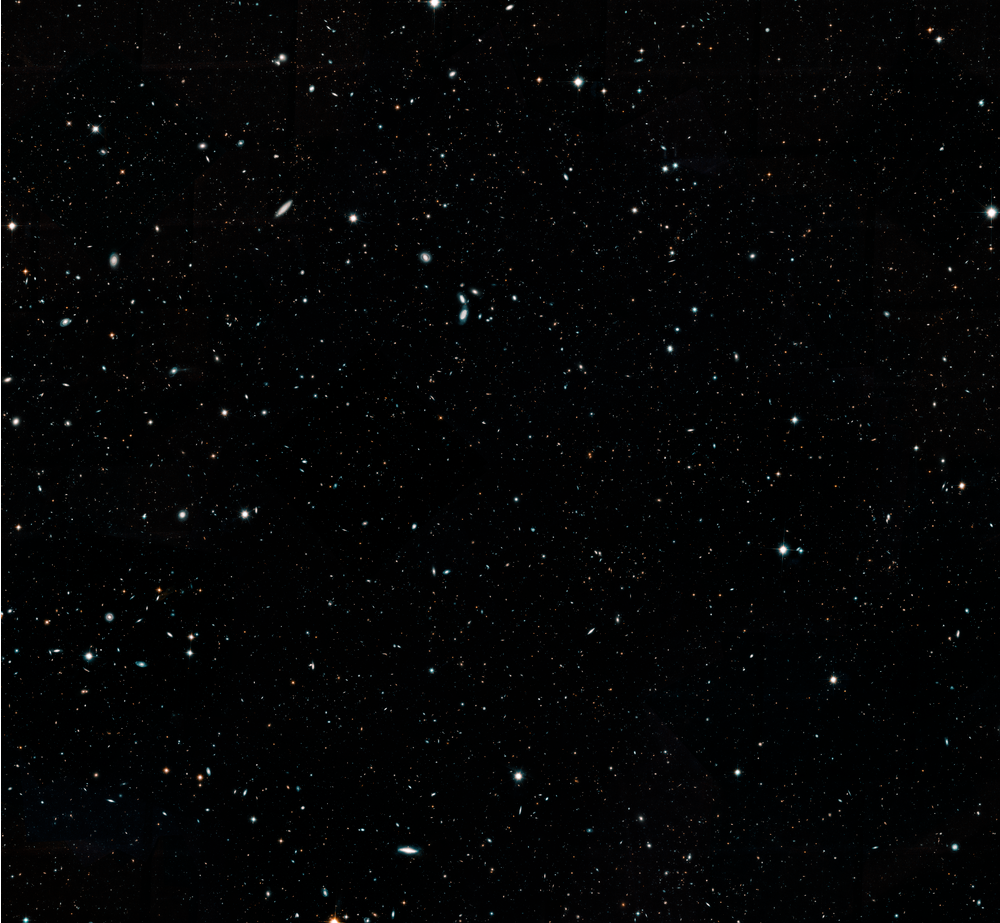
The folks who run the Hubble Space Telescope posted another deep-field image, this one the deep-field image to end all deep-field images (at least until there’s a bigger space telescope than Hubble).
The stories I read about the Hubble Legacy Field do a perfectly good job, by and large. They aptly describe the image as displaying 265,000 galaxies, through an amalgamation of 31 Hubble campaigns over thousands of orbits (the equivalent of 2,665 of the space telescope’s 40-minute orbits, to be specific). The exposure time enabled the imaging of galaxies dating back 13.3 billion years. They’re so faint that they’d need to be 10 billion times brighter for the human eye to perceive them. (For a better sense of how much work it took to create this picture, check this out).
What’s missing is a simple bit of perspective. This YouTube video gets at part of it, showing how much wider the Hubble Legacy Field’s field of view is than previous Hubble Deep Field images. But this much-wider scope — about the size of the full moon (or, if you prefer, the sun) in the sky, so about a half-degree, angularly speaking — takes up just a tiny fraction of the sky. All those galaxies occupy less than one two-hundred-thousandth of the celestial sphere. So if you filled the stadium the Ohio State Buckeye football team plays in, and every fan in every seat was assigned their own little patch of sky — and you did that twice — that’s how many equivalents of the Hubble Legacy Field are actually out there.
Meaning, really, that what the Hubble Legacy Field didn’t capture is incredible as what it did capture.
